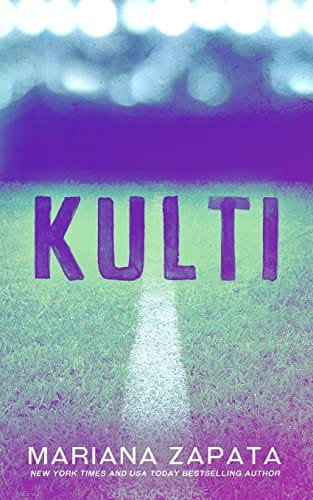Kulti: The Industrial Heartbeat of West Bengal
Discover Kulti, West Bengal's industrial town where steel heritage meets culture, education, and scenic river views. Learn its history, economy, and travel tips.

Introduction
Kulti, a bustling township in the Paschim Bardhaman district of West Bengal, India, is often overshadowed by its larger neighbors such as Asansol and Durgapur. Yet, this industrious enclave has a rich legacy that stretches from the early days of Indian steelmaking to today’s rapidly expanding service sector. Located along the banks of the river Barakar and lying close to the Jharkhand border, Kulti serves as a vital cog in the economic engine of eastern India. This article explores the town’s historical significance, economic evolution, cultural tapestry, and travel essentials—everything you need to know before adding Kulti to your itinerary or investment map.
Historical Background
The history of Kulti is inseparable from the history of Indian metallurgy. During the late 19th century, the discovery of rich coal deposits in the Raniganj Coalfield spurred the British to establish iron and steel units in the region. The Bengal Iron Works, founded in 1870, later evolved into the Indian Iron & Steel Company (IISCO), placing Kulti firmly on the industrial map. The town rapidly transformed from a quiet riverside settlement into a factory-driven hub, drawing migrant workers from Bihar, Odisha, and the surrounding Bengali countryside. Today, relics of colonial-era chimneys stand side by side with modern blast furnaces, telling a story of industrial perseverance.
Geography and Climate
Kulti enjoys a strategic location between the Barakar and Damodar rivers, which not only supply water for industrial processes but also fertilize the surrounding plains. The town lies at an average elevation of 114 meters, with gently undulating terrain dotted by patches of forest. Kulti’s climate is classified as tropical wet and dry. Summers (March–June) are hot, with temperatures soaring above 40 °C, while monsoons (July–September) bring abundant rainfall. Winters (December–February) remain mild and pleasant, making this the best time to explore the area.
Economy and Industries
Industrialization remains the backbone of Kulti’s economy. The IISCO Steel Plant, now a part of Steel Authority of India Limited (SAIL), continues to be the largest employer, producing pig iron, billets, and finished steel for domestic and export markets. Ancillary units such as refractory brick makers, foundries, and fabrication workshops have sprung up around the plant, creating a robust ecosystem of small and medium enterprises. In recent years, the service sector—especially retail, logistics, and education—has begun to flourish, buoyed by improved road and rail connectivity. Real estate prices have surged as professionals from nearby Asansol choose Kulti’s quieter suburbs for residential purposes.
Culture and Lifestyle
Kulti’s cultural fabric is woven from a mix of Bengali, Bihari, and tribal influences, thanks to decades of migration. Durga Puja remains the grandest festival, with steel plant employees’ clubs competing in elaborate ‘pandal’ designs. Chhath Puja, celebrated mainly by Bihari communities along the riverbanks, adds a unique splash of devotional fervor. Traditional Bengali cuisine—fish curry, ‘shukto’, and ‘mishti doi’—coexists with Bihari delicacies like ‘litti chokha’ sold on bustling street corners. With literacy rates above 80%, local residents take pride in cultural pursuits such as theatre, Rabindra Sangeet recitals, and cricket leagues organized during winter vacations.
Education and Healthcare
Recognizing the need for a skilled workforce, Kulti hosts an array of educational institutions ranging from government-aided primary schools to private CBSE-affiliated high schools. The Kulti College, affiliated with Kazi Nazrul University, offers undergraduate degrees in arts, commerce, and science, drawing students from neighboring villages. Technical institutes specializing in welding, drafting, and computer applications cater directly to plant requirements. Healthcare infrastructure is anchored by the IISCO Hospital, a 250-bed facility equipped with modern diagnostic labs, intensive care units, and a 24/7 trauma center. Several nursing homes and pathology labs provide supplementary medical services.
Tourist Attractions
While industry dominates the skyline, Kulti surprises first-time visitors with pockets of natural beauty and heritage. The picturesque Barakar River embankment is ideal for evening strolls and fishing expeditions, especially during winter when migratory birds flock to the wetlands. A short drive leads to Maithon Dam, dubbed the ‘Kashmir of Kulti’, where boating and picnic facilities attract families every weekend. History enthusiasts can explore the abandoned chimneys of Bengal Iron Works, preserved as industrial heritage sites. Nearby, the Panchet Hill offers panoramic views of the Damodar valley and is a favorite trekking spot for college students.
How to Reach Kulti
Kulti’s accessibility is one of its strongest assets. By rail, the Kulti Railway Station lies on the vital Asansol–Adra section of the South Eastern Railway, connecting it directly to Kolkata, Delhi, Mumbai, and Chennai. Road travelers can take National Highway 19 (formerly NH 2) and branch off onto a well-maintained state road that reaches the town center in under 15 minutes. The nearest commercial airport is Kazi Nazrul Islam Airport in Durgapur, about 50 kilometers away, offering daily flights to major Indian metros. Local transport includes shared auto-rickshaws, cycle-vans, and app-based cab services.
Conclusion
From its pioneering role in India’s steel saga to its evolving identity as an education hub, Kulti exemplifies the dynamism of small-town India. The clang of rolling mills continues to harmonize with the chants of temple bells, reflecting a community that honors both progress and tradition. Whether you are an investor scouting for growth corridors, a traveler seeking offbeat destinations, or a student of industrial history, Kulti warrants a spot on your radar. As infrastructure projects gather momentum and sustainability initiatives enter local discourse, the future of Kulti looks brighter than ever.
